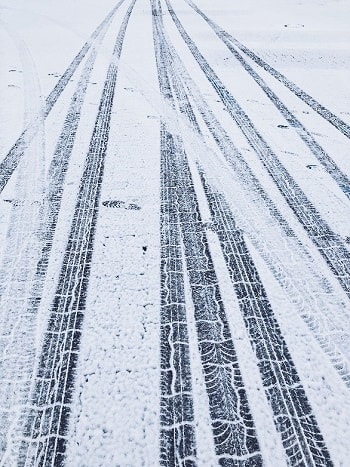By Kayleigh Montgomery, Canadian Red Cross Digital Volunteer
From the Atlantic, to the Pacific, to the Arctic, winter impacts all Canadians. Snow, freezing rain, black ice, slush, muck and mud cover roads in potentially every month of the year. Following these four winter driving tips will prepare you for a safe winter journey and indoctrinate yourself with some truly Canadian knowledge.
Tire Tech
 Winter tires are critical to safe winter driving. They are not just for snow, they are designed to perform better on icy roads and give you improved traction in cold temperatures.
Winter tires are critical to safe winter driving. They are not just for snow, they are designed to perform better on icy roads and give you improved traction in cold temperatures.
Purchase a full set of winter tires and keep them on your car for the duration of the season. Be sure to check tire air pressure frequently, as it decreases in cold weather.
Headlines across the country: October 1st, 2018 Winter tires mandatory on certain British Columbia highways
The Kit
Keep essential supplies in a box in your vehicle such as a first aid kit, flashlight, blanket, small shovel, sand/kitty litter (for traction), booster cables, extra windshield fluid, a snow brush/ice scraper, an extra set of mittens or gloves, warm hat and boots.
Snacks are a tasty addition too. During extreme weather events, you may not be the only one waiting for a tow truck.
Headlines across the country: October 2nd, 2018 Calgary, AB: Record snowfall strands motorists for 13 hours on highway 1
Weather, it’s something People Talk About
Listen to the weather report before you head out and beware of conditions such as blizzards and black ice. Black ice isn’t always noticeable as it can form on roads cleared of snow. If you decide to drive, make sure you can see properly and be seen, and always let snowplows through.
Headlines across the country: January 10th, 2015 Cambridge Bay, Nunavut: Artic Blizzard dumps two meters of snow blocking roads
Drive with Style
 Allow extra travel time to your destination and extra time and space to change lanes and turn safely. It takes longer to stop on snow-covered or icy roads—reduce your speed and leave ample distance between your vehicle and the one in front of you.
Allow extra travel time to your destination and extra time and space to change lanes and turn safely. It takes longer to stop on snow-covered or icy roads—reduce your speed and leave ample distance between your vehicle and the one in front of you.
Clear all windows, lights, mirrors, and the roof before you set out. Make sure you can see properly and be seen by others by clearing your car of all snow and ice, and turning your lights on when visibility is poor.
Never pass a snowplow—stay well back for your own safety and to allow them to do their job.
Slow down and make sure to avoid any abrupt turns or stops to control skids properly. In a skid, drivers need to act contrary to their instincts, steer into the skid and accelerate to regain control of their vehicle.
If you get stuck or stranded, don’t panic. Stay with your vehicle for safety and warmth, and call for help. Carry a fully-charged cell phone and use it only when safe. Do not use while driving unless your device is hands-free. Keep your gas tank at least half-full at all times throughout winter.
Headlines across the country: February 13th, 2017 Halifax Blizzard strands snow plows
Take a Red Cross first aid course to learn what to do if you find yourself in an emergency on the road.
Download the free Red Cross First Aid app for access to essential information on the go.

